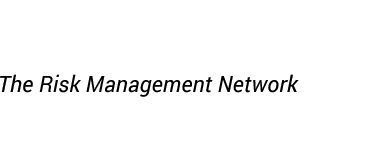Dem Risikomanagement kommt in der Bankensteuerung heute mehr den je eine zentrale Rolle zu – denn relevante Risiken finden sich nicht mehr nur im traditionellen Kreditgeschäft, sondern in allen Unternehmensbereichen. Diese für die Stabilität der Banken grundlegende Bedeutung wird bei der Steuerung der Institute allerdings bislang zu wenig berücksichtigt.
Erfolgreiches Bankmanagement ist – wie die Finanzmarktkrise weltweit gezeigt hat – vor allem anderen eins: das Ergebnis eines leistungsfähigen Risikomanagements. Selbst starke Global Player können binnen weniger Jahre an einem schwachen Risikomanagement zugrunde gehen. Weltweit agierende Top-Banken, die in der Finanzkrise nur mit massiven Rettungsaktionen ihrer Heimatländer vor der Insolvenz geschützt werden konnten, sind der Beleg dafür. Das Geschäftsmodell einer Bank besteht im Grunde darin, Risiken zu übernehmen, zu transformieren und professionell zu managen. So verbirgt sich hinter der Kreditmarge das Entgelt für die Übernahme des Adressenausfallrisikos, des Liquiditätsrisikos und der Fristentransformation. Das Adressenausfallrisiko wird wiederum bestimmt von der Bonität der Einzeladresse, der Branche, dem Länderrisiko und dem Stand im Konjunkturzyklus. Hinzu kommen Korrelationen, die zu so genannten Klumpenrisiken führen können. Hinter den Sicherheiten, die zu einer Absenkung der Marge führen können, stecken Bewertungsrisiken. Ohne ein leistungsfähiges Risikomanagement ist also heute eine markt- und umfeldgerechte Preisbestimmung für Kredite gar nicht mehr möglich. Eine Bank, die noch glaubt, mit einer Einheitsmarge operieren zu können, verliert das gute Geschäft und muss sich um die Akquisition des schlechten nicht kümmern – es kommt von selbst.
[Quelle: Jahrbuch 2010 von Frankfurt Main Finance]
Hartmann 6571 Downloads02.02.2011
Datei downloaden Aon hat das politische Risiko von 211 Ländern und Territorien bewertet und erfasste dafür das Risiko der Nichtkonvertierbarkeit und des Transfers von Währungen, Streiks, Aufstände und Bürgerunruhen, Krieg, Einstellung staatlicher Zahlungen, politische Interferenzen, Unterbrechungen der Lieferkette sowie gesetzliche und ordnungspolitische Risiken. Das Risiko wurde länderweise als "Gering", "Mittelgering", "Mittel", "Mittelhoch", "Hoch" oder "Sehr hoch" eingestuft. Ein Land mit "erhöhtem" Risiko wird als Land mit einem mittelgeringen, mittleren, mittelhohen, hohen oder sehr hohen Risiko eingestuft. Die Ergebnisse der Analyse werden auf der von Aon in Zusammenarbeit mit Oxford Analytica erstellten Weltkarte für politische Risiken 2011 dargestellt. Oxford Analytica schöpft seine Untersuchungsergebnisse aus einem weltweiten Netzwerk aus mehr als 1.000 Fachleuten – einschließlich führender Dozenten der Oxford University und bedeutender Forschungseinrichtungen auf der ganzen Welt – um das geopolitische Risiko unabhängig bewerten zu können.
AON 8185 Downloads20.01.2011
Datei downloaden In den letzten Jahren erfreuen sich die Ansätze zur dynamischen Szenario-Analyse in Form von Cash Flow at Risk, EBIT at Risk, Earnings at Risk oder Budget at Risk großer Beliebtheit in der Planung der Unternehmen und deren Risikomanagement. Bei dem vorliegenden E-Book handelt es sich um die im Jahr 2001 erstellte Dissertation zum finanziellen Risikomanagement in Unternehmen von Peter Hager. [Hinweis: Das Werk ist urheberrechtlich geschützt.]
Hager 59659 Downloads08.10.2010
Datei downloaden Der Umgang mit Risiken im Unternehmen der Realwirtschaft und die nachhaltige Steuerung dieser Risiken haben aufgrund der wirtschaftlichen Entwicklungen seit 2008 stark an Bedeutung gewonnen, so die Experten des Wirtschaftsprüfers PricewaterhouseCoopers (PWC) in der Studie "Risk-Management-Benchmarking 2010". Unternehmen müssen auch in wirtschaftlich volatilen Situationen in der Lage sein, Risiken frühzeitig zu erkennen, die Gesamtrisikosituation zu bewerten und durch Einleiten adäquater Gegenmaßnahmen auf sie zu reagieren. Die Benchmark-Studie zeigt auf, wie sich deutsche Großunternehmen der Realwirtschaft aktuell dieser Herausforderung stellen und wie ihr Risikomanagementsystem (RMS) ausgestaltet ist.
PWC 9694 Downloads02.10.2010
Datei downloaden Um im zunehmend dynamischeren Umfeld flexibler auf Chancen und Risiken reagieren zu können, sind Delegation und Dezentralisierung wichtige Maßnahmen. Es ist jedoch nur ein Teil des Weges: Nur wer dieses kombiniert mit der gedanklichen Auseinandersetzung und Integration von Chancen und Risiken über Organisationseinheiten hinweg, wird auch langfristig erfolgreich sein. Szenarien und betriebswirtschaftliche Simulationen sind geeignete Methoden mit unbestrittenem Nutzen für das Management von Chancen und Risiken, aber bisher eher sporadischer Anwendung. Dabei ist ihre Nutzung bei Berücksichtigung einiger Kriterien zur Auswahl des passenden Ansatzes überraschend unkompliziert.
[Quelle: Risk, Compliance &
Audit, Ausgabe 05/2010, Seite 12-18]
Spitzner 9914 Downloads01.10.2010
Datei downloaden "Arbitrage CDOs" have recorded an explosive growth during the years before the outbreak of the financial crisis. In the present paper we discuss potential sources of such arbitrage opportunities, in particular arbitrage gains due to mispricing. For this purpose we examine the risk profiles of Collateralized Debt Obligations (CDOs) in some detail. The analyses reveal significant differences in the risk profile between CDO tranches and corporate bonds, in particular concerning the considerably increased sensitivity to systematic risks. This has farreaching consequences for risk management, pricing and regulatory capital requirements. A simple analytical valuation model based on the CAPM and the single-factor Merton model is used in order to keep the model framework simple. Then, the conditional expected loss curve (EL profile) is studied in some detail. In the next step, the asset correlation associated with a CDO tranche is estimated treating the structured instrument as a single-name credit instrument (i.e., a loan equivalent). While tractable, the loan-equivalent approach requires appropriate parameterization to achieve a reasonable approximation of the tranche´s risk profile. We consider the tranche as a "virtual" borrower or bond for which a single-factor model holds. Then, the correlation parameter is calculated via a non-linear optimization. This "bond representation" allows to approximate the risk profile (expressed by the EL profile) using a single-factor model and to express the dependence on the systematic risk factor via the corresponding asset correlation. It turns out that the resulting asset correlation is many times higher than that of straight bonds. Then, the Merton type valuation model for the corresponding bond representations is applied for valuation of the CDO tranches. Using a sample CDO portfolio, some opportunities for "CDO arbitrage" are described where it is assumed that investors are guided solely by the tranches’ rating and ignore the increased systematic risk for pricing. In the next section we discuss how tranches with high systematic risk can be generated and how CDO arrangers can exploit this to their advantage. It comes as no surprise that precisely these types of structures featured in many of the CDOs issued prior to the outbreak of the financial crisis.
[Source: Discussion Paper No 13, Series 2: Banking and Financial Studies, 2009, Deutsche Bundesbank, Frankfurt/Main]
Hamerle 7538 Downloads16.09.2010
Datei downloaden Spätestens 2007/2008 ist offensichtlich geworden, dass Risikokonzentrationen in den Finanzinstituten noch nicht ausreichend berücksichtigt werden. Expliziten Handlungsbedarf signalisiert auch die Bankenaufsicht, zuletzt durch den MaRisk-Entwurf vom 9. Juli 2010. Die Integration von Risikokonzentrationen in die Prozesse des Risikomanagements- und -controllings ist wohl ein wesentlicher Meilenstein für den Ausbruch aus dem Denken in einzelnen Risikoarten-Silos. Auf diesem Weg sind jedoch noch einige Hürden zu überwinden. Dies wird nachfolgend am Beispiel der Bewertung von Risikokonzentrationen gezeigt.
[Quelle: Brzozowska, Aneta/Stübner, Peter: Bewertung von Risikokonzentrationen – mehr als nur neue Kennzahlen, in: RISIKO MANAGER, Ausgabe 17/2010, S. 1, 8-16.]
MQuick 11839 Downloads15.09.2010
Datei downloaden A major source of risk in project management is inaccurate forecasts of project costs, demand, and other impacts. The paper presents a promising new approach to mitigating such risk based on theories of decision-making under uncertainty, which won the 2002 Nobel Prize in economics. First, the paper documents inaccuracy and risk in projectmanagement.
Second, it explains inaccuracy in terms of optimism bias and strategic misrepresentation. Third, the theoretical basis is presented for a promising new method called "reference class forecasting", which achieves accuracy by basing forecasts on actual performance in a reference class of comparable projects and thereby bypassing both optimism bias and strategic misrepresentation. Fourth, the paper presents the first instance of practical reference class forecasting, which concerns cost forecasts for large transportation infrastructure projects. Finally, potentials for and barriers to reference class forecasting are assessed.
[Source: Flyvbjerg, Bent: From Nobel Prize to Project Management: Getting Risks Right, in: Project Management Journal (Project Management Institute) 37 (3): 5–15.]
Flyvbjerg 3306 Downloads27.08.2010
Datei downloaden The liberalization of electricity markets has forced the energy producing companies to react to the new situation. The abolishment of monopolies and the launch of open markets have increased the need of calculating costs closer to the profit frontier to be still competitive, not only against the other German but also against foreign suppliers. Thus, an efficient risk management and risk controlling are needed to ensure the financial survival of the company even during bad times. In this work we use the RAROC methodology to develop a Monte Carlo Simulation based model to quantify risks related to wholesale electricity contracts, also called full load contracts. We do not only consider risk due to market price fluctuations but also due to correlation effects between the spot market price and the load curve of a single customer.
[Authors: M.Prokopczuk, S.Rachev and S.Trueck]
Trueck 4083 Downloads27.08.2010
Datei downloaden Risk management is an increasingly important business driver and stakeholders have become much more concerned about risk. Risk may be a driver of strategic decisions, it may be a cause of uncertainty in the organisation or it may simply be embedded in the activities of the organisation. An enterprise-wide approach to risk management enables an organisation to consider the potential impact of all types of risks on all processes, activities, stakeholders, products and services. Implementing a comprehensive approach will result in an organisation benefiting from what is often referred to as the ‘upside of risk’. The global financial crisis in 2008 demonstrated the importance of adequate risk management. Since that time, new risk management standards have been published, including the international standard, ISO 31000 ‘Risk management – Principles and guidelines’. This guide draws together these developments to provide a structured approach to implementing enterprise risk management (ERM).
[Source: Airmic/Alarm/IRM (2010): A structured approach to Enterprise Risk Management (ERM) and the requirements of ISO 31000]
Airmic 5210 Downloads30.07.2010
Datei downloaden 
